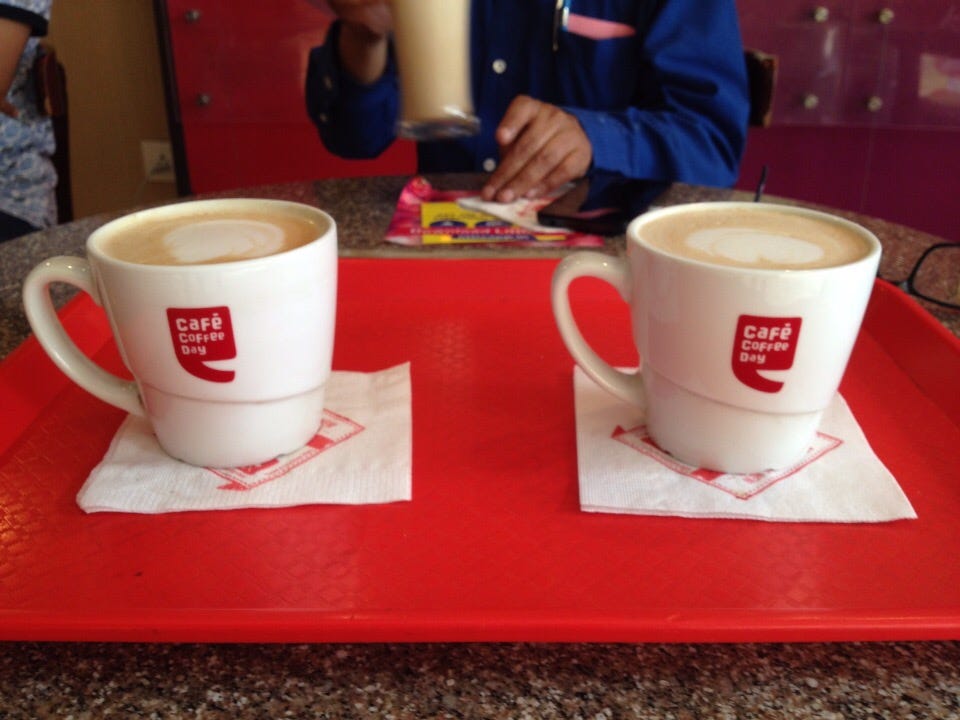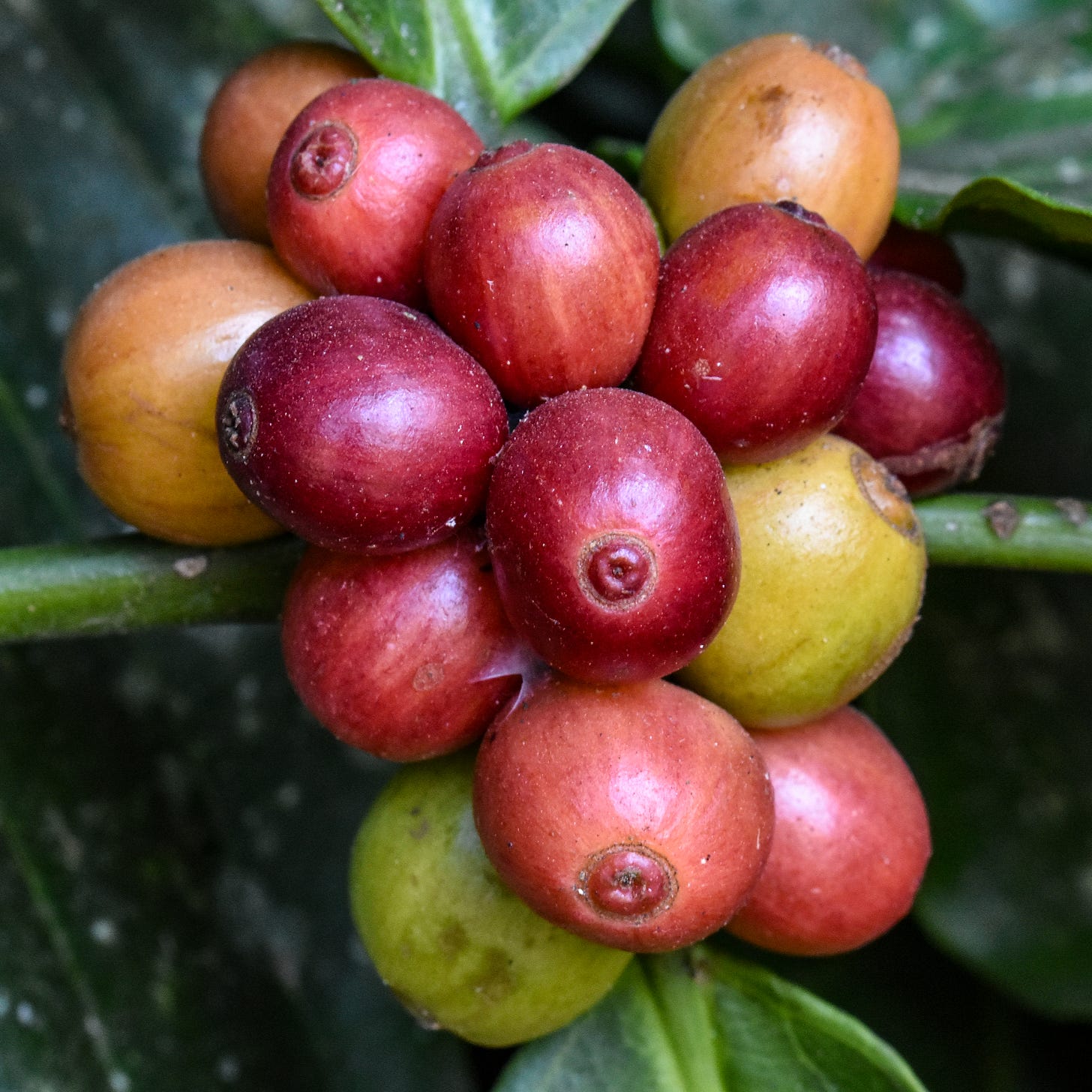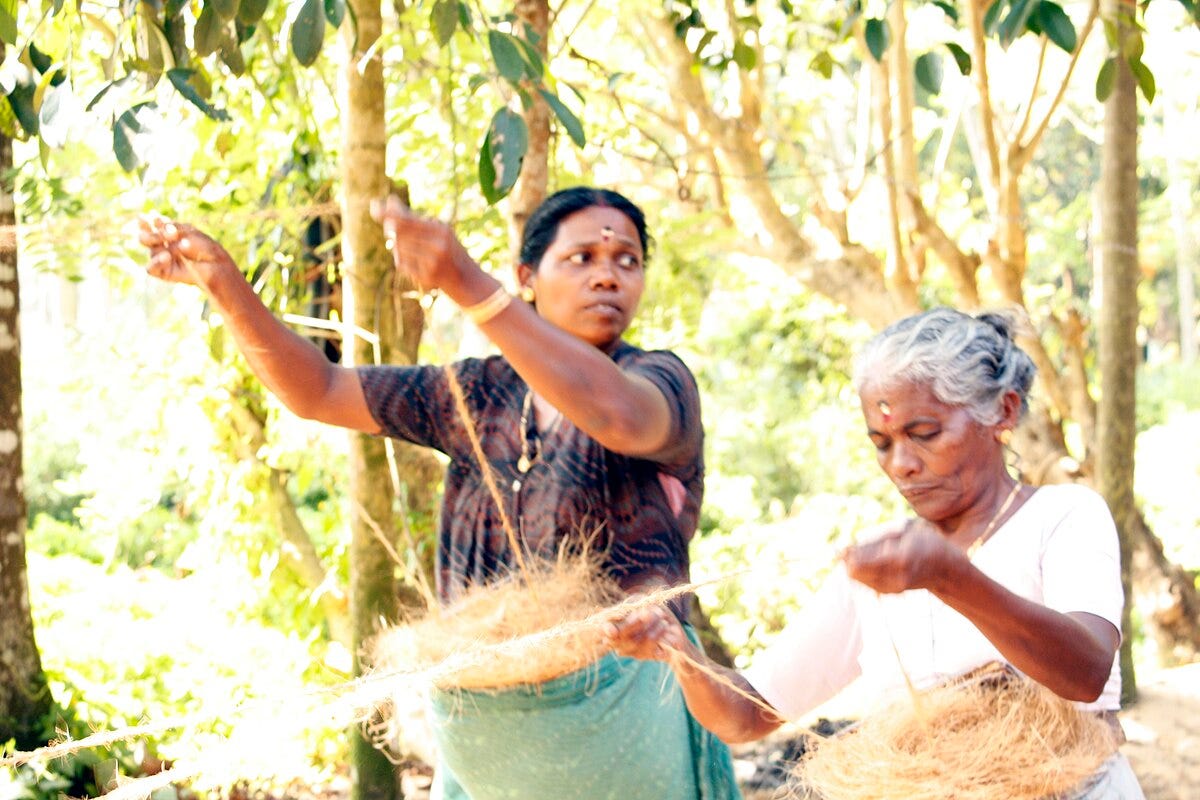Why India's Coffee Harvests and Exports Are Rising
Sharp rise in global coffee prices is mainly benefitting exporters in India says Sunil Mani
(Photo: Cafe Coffee Day, Kolkata, India. Courtesy Wikimedia Commons.)
By Sunil Mani*
Drinking tea is an integral part of the daily rituals of Indians, part of the national identity. Indians consume several cups of chai every day, including to greet guests at home and at social gatherings.
In recent decades, consumption of coffee has risen in India, fuelled by demand from a growing middle-class and advertising by Starbucks and local cafes. As in other markets, there is a wide range in the quality and price of a cup of coffee in India. For instance, in Bangalore, a cup costs Rs.15 to Rs. 25 ($0.17 to $0.30) at a local outlet; Rs.120 to Rs.250 ($1.30 to $2.80) at a mid-tier café like Café Coffee Day; and Rs.310 to Rs.520 ($3.50 to $5.80) at Starbucks and Third Wave Coffee.
Both Robusta and Arabica coffee beans are grown in India. Robusta, while stronger, is more bitter and preferred for instant coffee. Arabica, known for its milder flavour and aroma, is used in speciality roasts and commands higher prices. Robusta accounted for nearly three quarters of India’s 360,000 metric tons coffee harvest in fiscal year 2023-2024; with Arabica accounting for the rest. The country accounts for about four per cent of global output of the beverage.
Three quarters of India’s coffee harvest is exported. It is a major agricultural export bringing in $1.3 billion in revenues last year. India’s exports, which account for roughly five percent of world trade, go mainly to Italy, Germany, Belgium, Turkey, and Russia. While India’s Arabica coffee commands a premium to global prices, Robusta exports typically sells at a discount.
Karnataka state accounts for more than two-thirds of the roughly 500,000 hectares of coffee farms in India, followed by Kerala, with about a fifth, and Tamil Nadu. The farming has been highly lucrative, especially for the owners of the large estates like Tata Coffee and other companies. Tata Coffee operates around 8,000 hectares in the three states, including in Coorg, Chikmagalur, Wayanad, and Ooty regions. Overall, estates larger than ten hectares contribute about a quarter of the country’s harvest.
Medium-sized farms, of two to ten hectares, and small farms, of less than two hectares, account for the rest. While they account for the bulk of India’s harvest, these growers plant coffee alongside spices such as cardamom, pepper, and vanilla. In contrast, in Brazil and Vietnam, the world’s two major producers, large, mechanized commercial farms exclusively grow coffee. Not surprising then that the coffee yields in India, around 800 kilograms per hectare, is half that of Brazil and less than a third that in Vietnam.
(Photo: Robusta coffee seeds. Coorg, Karnataka, India. Courtesy Wikimedia Commons.)
Since 2020, global coffee prices have soared: benchmark Robusta prices have tripled to around $4,400 per kg. In fact, prices in India have risen more sharply than in global markets. The country imported roughly 85,000 metric tons of coffee during the last fiscal year, despite high tariffs: 30% on instant coffee and 100% on green/roasted coffee.
Prices have risen due to falling global supplies, with Brazil and Vietnam facing adverse weather conditions. Brazil, which produces nearly half of the world’s Arabica, has suffered severe droughts. Vietnam, the largest producer of Robusta, has suffered droughts followed by excessive rains. In India too, erratic monsoons have disrupted flowering and reduced yields. India’s Coffee Board estimates that output in the current year will decline by more than 10 per cent.
In India, pricing data clearly shows that, while small and medium growers have benefitted from rising prices, they typically receive only a fifth of the prices paid by consumers. These growers sell raw or semi-processed beans to traders and roasters and so do not share in the profits earned along the chain from traders to retailers. Also, their harvesting and initial processing, carried out by manual labor, is inefficient. On many small and medium farms, one kilogram of dry cherry yields only around half a kilogram of green beans.
The major beneficiaries of the rising prices have been the traders, roasters and exporters. These operations are dominated by a few large, vertically integrated multi-national and Indian companies. Multi-nationals include Louis Dreyfus, of France, Olam Agro, of Singapore, and Neumann Kaffee Gruppe, of Germany. These three together buy more than a third of India’s coffee output and account for nearly half of the country’s exports. Indian companies include Tata Coffee, which has a joint venture with Starbucks, and Hindustan Unilever. They together buy roughly an eighth of India’s output.
Some growers, anticipating higher coffee prices, hold back stocks to sell later. However, green coffee beans have a limited shelf life—typically six to twelve months under optimal storage. So, while withholding stock can be profitable if prices increase, this exposes farmers to the risk of degradation of their beans.
(Photo: Picking coffee beans. India. Courtesy Wikimedia Commons.)
Until the late 1990s, India’s coffee industry was tightly regulated. Growers were required to pool their produce with the Coffee Board. The semi-government agency then sold the beans both domestically and abroad. This system insulated growers and consumers from the swings in global prices but prevented large growers and exporters from benefitting when global prices were higher.
In 1999, the coffee trade was opened up: growers sell directly to traders and roasters. While this reform helps exporters benefit when global prices move higher, the income of small and medium growers is subject to swings in prices.
Today, the Coffee Board plays no role in stabilising prices for growers. Instead, it focuses on providing market intelligence, quality certification, and promoting Indian coffee both domestically and internationally.
Tea remains India’s dominant beverage, with annual per capita consumption of about 840 grams. Coffee consumption is low, less than a tenth of the tea consumed. This is partly due to habitual taste and since the retail price of tea is half that of coffee. For instance, the price of tea ranges from Rs.500 ($5.50) to Rs.750 ($8.30) per kg, on the online Flipkart store. The price of one kg of roasted Arabica coffee beans ranges from Rs. 900 ($10), for a generic brew, to Rs 1766 ($20), for premium single origin beans from the Bean Company.
However, as the middle class expands in India and more of them can buy a different caffeine kick, domestic consumption of coffee will keep rising.
*Sunil Mani is a visiting professor, Centre for Development Studies, and Ahmedabad University, both in India. The views expressed are personal.




